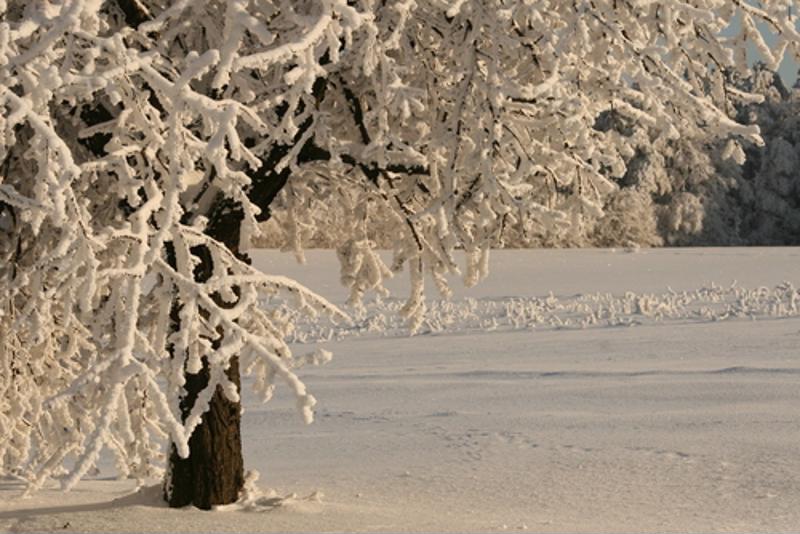Everybody has a favorite tool out of all the ones in their garages, but there’s something special about a chainsaw that takes winter storm cleanup to the next level. These powerful machines are essential if you live in an area where snow storms fell trees like it’s their full-time job, but you still need to know how to stay safe when wielding a chainsaw with snow and ice all over the place.
If you’ve been a little apprehensive about taking the chainsaw out for its first cold-weather spin, check out these three safety tips to make winter storm cleanup as safe as possible.

Felling trees isn’t for beginners.
1. Stay in your comfort zone
While your Husqvarna chainsaw might make you feel like you’re ready to chop down trees like Paul Bunyan, you should never take on a cleanup project that you’re not prepared for. It should go without saying that standing trees should be left to professional crews, and even small branches that down power lines are too dangerous for a beginner to tackle.
If this is your first winter with a chainsaw at the ready, it’s in your best interest to stick to the smaller branches and limbs that might be strewn across your property after a storm. You should also keep an eye out for “spring poles” – branches or limbs that are bent under larger debris. Cutting the obstructions could cause these to spring back to position and potentially result in injury.
2. Harder wood, sharper blades
It doesn’t take an expert to realize that frozen wood is harder to cut through than its thawed counterpart. You don’t want to be there all day grinding away at a layer of permafrost over the bark, though – not only is this dangerous, it could ruin your chainsaw’s engine.
That’s why it’s important to sharpen your blades before the first storm hits. Frozen wood will also wear down the edge on your chainsaw faster, so keep a few spare chains on hand for a quick cleanup.
“Frozen wood will wear down the edge on your chainsaw faster.”
3. Know the handling basics
Chainsaws like the Husqvarna 365 X-Torq are some of the most powerful handheld tools you can buy, and you need to be prepared to keep every one of those CCs under control. This can be even more difficult in the winter when snow and ice and rob you of a stable surface to steady yourself on while you work.
If you don’t know how to handle a chainsaw to prevent kickback, now’s the time to learn. Always initiate a cut with the middle part of the blade – never the tip. Starting with the nose of the chainsaw will cause it to jump violently in the direction of the blade’s rotation. No matter how strong you think you are, chainsaw kickback is too sudden and too powerful for even the most dedicated gym rats to control.
You should also keep the blade below your waist at all times. Bringing it up by your chest is just asking for trouble, so don’t even try.